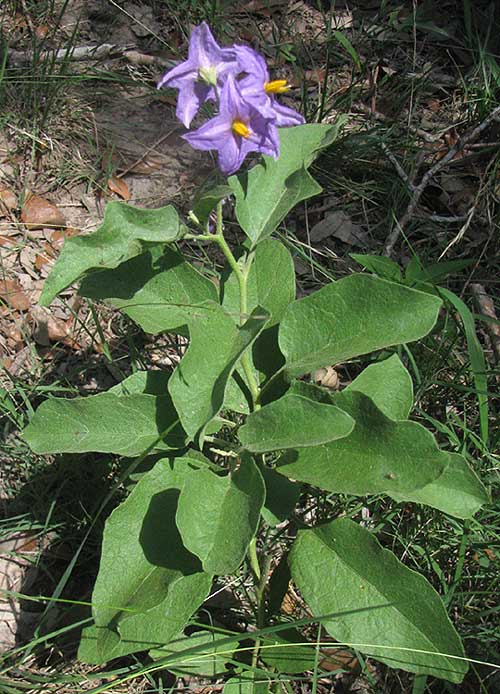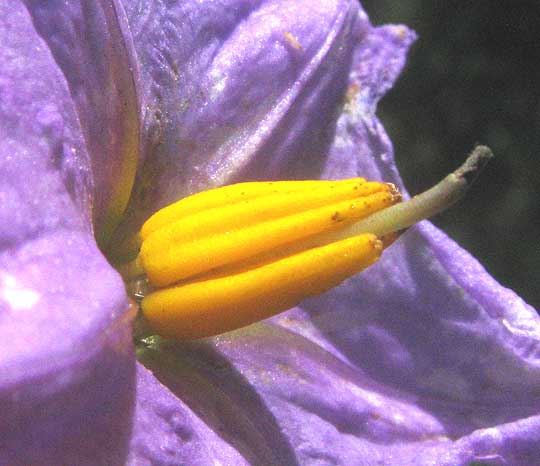Excerpts from Jim Conrad's
Naturalist Newsletter
from the June 30, 2013 Newsletter issued from the Frio Canyon Nature Education Center in the valley of the Dry Frio River in northern Uvalde County, southwestern Texas, on the southern border of the Edwards Plateau; elevation ~1750m (~5750 ft); N29.62°, W99.86°; USA
WESTERN HORSENETTLE
Nowadays a roadside weed producing purple corollas with yellow "noses" very similar to those on the Silverleaf Nightshade we looked at a couple of weeks ago, but this species' leaves are greener and broader. These are closely related Western Horsenettles, SOLANUM DIMIDIATUM, shown below:

A close-up of the yellow "nose" comprising five pollen-producing anthers gathered around the ovary's style appears below:

These two species are so similar and closely related that you wonder why the name givers decided that the silvery leafed one was a nightshade but this one is a horsenettle. Probably it's because the Silverleaf Nightshade bears fewer spines or none at all, while our Western Horsenettle nearly always produces spines worthy of consideration when going barefooted.
Western Horsenettle is native to the US south-central states from Kansas to our area, plus it's invasive in other southern states. As with many species in the genus Solanum the fruits are poisonous and are probably responsible for “Crazy Cow Syndrome,” which expresses itself with staggering, tremors, and lack of coordination. In humans it can cause similar symptoms and in high enough doses finally leads to kidney failure, inability to breathe, and death.